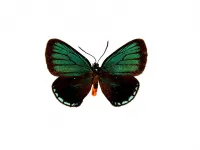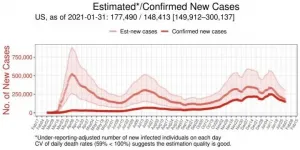How humans can build better teamwork with robots
2021-02-08
(Press-News.org) As human interaction with robots and artificial intelligence increases exponentially in areas like healthcare, manufacturing, transportation, space exploration, defense technologies, information about how humans and autonomous systems work within teams remains scarce.
Recent findings from human systems engineering research demonstrate that human-autonomy teaming comes with interaction limitations that can leave these teams less efficient than all-human teams.
Existing knowledge about teamwork primarily is based on human-to-human or human-to-automation interaction, which positions humans as supervisors of automated partners.
But as autonomy has increasingly developed decision-making skills based on spontaneous situation assessments, it can become a teammate rather than a servant. These shared decision interactions are identified as human-autonomy teaming, or HAT.
Nancy Cooke is a cognitive psychologist and professor of human systems engineering at the Polytechnic School at Arizona State University (ASU). She explores how an artificial intelligence agent can contribute to team communications failure, and how to improve those interactions, in her discussion at the annual meeting of the American Association for the Advancement of Science (AAAS).
As the director of ASU's Center for Human, Artificial Intelligence and Robot Teaming (CHART), a unit of the Global Security Initiative, Cooke applies her expertise in human teamwork and decision making to human-technology teams.
"One of the key aspects of being on a team is interacting with team members, and a lot of that on human teams happens by communicating in natural language, which is a bit of a sticking point for AI and robots," Cooke said.
Her discussion addresses a study in which teams of two humans and an AI, or "synthetic teammate," fly an unmanned aerial vehicle (UAV). The AI was the pilot, while the people served as a sensor operator and navigator.
The AI, developed by the Air Force Research Laboratory, communicated with the people via text chat.
"The team could function pretty well with the agent as long as nothing went wrong. As soon as things get tough or the team has to be a little adaptive, things start falling apart, because the agent isn't a very good team member."
The AI was unable to anticipate its teammates' needs the way humans do. As a result, it didn't provide critical information until asked -- it doesn't give a "heads up."
"The whole team kind of fell apart," Cooke said. "The humans would say, 'OK, you aren't going to give me any information proactively, I'm not going to give you any either.' It's everybody for themselves."
Cooke's presentation will address the importance of developing effective synthetic teammates and enhanced HAT interactions as these teams become more common and begin to engage in complex and dynamic environments beyond the UAV study parameters.
INFORMATION:
ELSE PRESS RELEASES FROM THIS DATE:
2021-02-08
How did rocks rust on Earth and turn red? A Rutgers-led study has shed new light on the important phenomenon and will help address questions about the Late Triassic climate more than 200 million years ago, when greenhouse gas levels were high enough to be a model for what our planet may be like in the future.
"All of the red color we see in New Jersey rocks and in the American Southwest is due to the natural mineral hematite," said lead author Christopher J. Lepre, an assistant teaching professor in the Department of Earth and Planetary Sciences in the School of Arts and Sciences at Rutgers University-New Brunswick. ...
2021-02-08
How come we don't hear everything twice: After all, our ears sit on opposite sides of our head and most sounds do not reach both our ears at exactly the same time. "While this helps us determine which direction sounds are coming from, it also means that our brain has to combine the information from both ears. Otherwise, we would hear an echo," explains Basil Preisig of the Department of Psychology at the University of Zurich.
In addition, input from the right ear reaches the left brain hemisphere first, while input from the left ear reaches the right brain hemisphere first. The two hemispheres ...
2021-02-08
Louisiana State University College of the Coast & Environment Boyd Professor R. Eugene Turner reconstructed a 100-year record chronicling water quality trends in the lower Mississippi River by compiling water quality data collected from 1901 to 2019 by federal and state agencies as well as the New Orleans Sewerage and Water Board. The Mississippi River is the largest river in North America with about 30 million people living within its watershed. Turner focused on data that tracked the water's acidity through pH levels and concentrations of bacteria, oxygen, lead and sulphate in this study published in Ambio, a journal of the Royal Swedish Academy of Sciences.
Rivers ...
2021-02-08
Alexandria, Va., USA -- High-volume aspirators are recommended in dental clinics during the COVID-19 pandemic, but the study "SARS-CoV-2 Seropositivity Among Dental Staff and the Role of Aspirating Systems" published in the JDR Clinical & Translational Research (JDR CTR), shows that the type of aspirating system significantly affects the incidence of SARS-CoV-2 infection among dental specialists.
In this retrospective cohort study of 157 healthcare workers in Ekaterinburg, Russia, data on the seroprevalence of COVID-19 from dental clinics using three different types of aspirating systems were compared. Clinic A and B used a V6000 aspirating system with a vacuum controller and high-efficiency ...
2021-02-08
Systems designed to detect deepfakes --videos that manipulate real-life footage via artificial intelligence--can be deceived, computer scientists showed for the first time at the WACV 2021 conference which took place online Jan. 5 to 9, 2021.
Researchers showed detectors can be defeated by inserting inputs called adversarial examples into every video frame. The adversarial examples are slightly manipulated inputs which cause artificial intelligence systems such as machine learning models to make a mistake. In addition, the team showed that the attack still works after videos are ...
2021-02-08
The Atala butterfly (Eumaeus atala) and its five closest relatives in the genus Eumaeus like to display their toxicity. This sextet's toxicity comes from what they eat as caterpillars: plants called cycads that have been around since before dinosaurs roamed the Earth and contain a potent liver toxin called cycasin.
Because they are filled with poison, Eumaeus are big, gaudily iridescent and flap about like they have no place to go. Even their caterpillars are conspicuous, congregating in groups to munch cycad plants all while sporting flashy red and gold ...
2021-02-08
CLEVELAND - A Cleveland Clinic-led team of researchers has developed a personalized genomic medicine platform that will help advance accelerate genomic medicine research and genome-informed drug discovery, according to new study results published recently in END ...
2021-02-08
CHICAGO --- Northwestern University professor and researcher Linda Teplin will discuss the psychosocial outcomes of incarcerated youth at the virtual 2021 American Association for the Advancement of Science (AAAS) annual meeting.
Teplin will moderate the scientific session "Consequences of Incarceration on Health Inequity and Racial Injustice" at 2 p.m. EST, Monday, Feb. 8. During the session, she will also present "Consequences of Incarceration in Detained Youth: A 15-Year Longitudinal Study."
Nearly 2.2 million Americans are incarcerated annually, ...
2021-02-08
A new machine-learning framework uses reported test results and death rates to calculate estimates of the actual number of current COVID-19 infections within all 50 U.S. states and 50 countries. Jungsik Noh and Gaudenz Danuser of the University of Texas Southwestern Medical Center present these findings in the open-access journal PLOS ONE on February 8, 2021.
During the ongoing pandemic, U.S. states and many countries have reported daily counts of COVID-19 infections and deaths confirmed by testing. However, many infections have gone undetected, resulting in under-counting of the total number of people currently infected at any ...
2021-02-08
(Santa Barbara, Calif.) -- Researchers in the labs of Christopher Bates, an assistant professor of materials at UC Santa Barbara, and Michael Chabinyc, a professor of materials and chair of the department, have teamed to develop the first 3D-printable "bottlebrush" elastomer. The new material results in printed objects that have unusual softness and elasticity -- mechanical properties that closely resemble those of human tissue.
Conventional elastomers, i.e. rubbers, are stiffer than many biological tissues. That's due to the size and shape of their constituent polymers, which are long, linear molecules that easily entangle like cooked spaghetti. In contrast, bottlebrush polymers ...
LAST 30 PRESS RELEASES:
[Press-News.org] How humans can build better teamwork with robots



